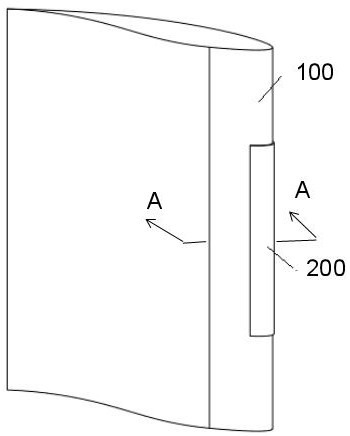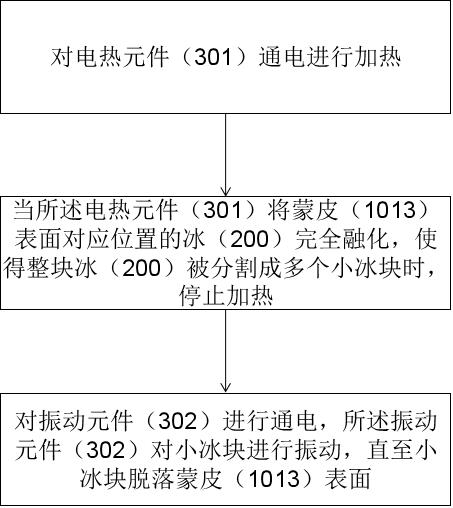Mechanical deicing device and deicing method for electric heating segmentation area
A technology that divides areas and machinery, and is applied in deicing devices, aircraft parts, transportation and packaging, etc. It can solve the problems of less energy consumption, more residual ice, and large energy consumption, and achieve less energy consumption and better deicing effect Good results
- Summary
- Abstract
- Description
- Claims
- Application Information
AI Technical Summary
Problems solved by technology
Method used
Image
Examples
Embodiment 1
[0032] Embodiment 1 of the present invention provides a mechanical deicing device 300 for electrothermally divided regions, including:
[0033] A plurality of electric heating elements 301, the plurality of electric heating elements 301 are arranged in an array;
[0034] A plurality of vibrating elements 302, each of the vibrating elements 302 is set in a one-to-one correspondence with the position of each of the electric heating elements 301;
[0035] The plurality of electric heating elements 301 and the plurality of vibration elements 302 are distributed on the first surface 1011 and the second surface 1012 of the airfoil model 100, wherein the first surface 1011 and the second surface 1012 constitute The leading edge region of the airfoil model 100, and the first surface 1011 and the second surface 1012 are separated by a leading edge line 1014; the upper surface of the first surface 1011 and the second surface 1012 has a skin 1013 , the multiple electric heating elements...
Embodiment 2
[0054] The present invention also provides a method for deicing by using the above-mentioned mechanical deicing device for electrothermal division area, such as Figure 5 shown, including the following steps:
[0055] Step S1: energize the heating element 301 for heating;
[0056] Step S2: Stop heating when the electric heating element 301 completely melts the ice 200 at the corresponding position on the surface of the skin 1013 so that the whole block of ice 200 is divided into multiple small ice cubes;
[0057] Step S3: power on the vibrating element 302, and the vibrating element 302 vibrates the small ice until the small ice falls off the surface of the skin 1013.
[0058] In the above solution, when the aircraft needs to be deiced, multiple electric heating elements 301 are heated at the same time, and when the ice layer on the surface of the skin 1013 corresponding to the electric heating element 301 melts and evaporates, the whole piece of ice 200 is divided into multi...
PUM
 Login to View More
Login to View More Abstract
Description
Claims
Application Information
 Login to View More
Login to View More - R&D
- Intellectual Property
- Life Sciences
- Materials
- Tech Scout
- Unparalleled Data Quality
- Higher Quality Content
- 60% Fewer Hallucinations
Browse by: Latest US Patents, China's latest patents, Technical Efficacy Thesaurus, Application Domain, Technology Topic, Popular Technical Reports.
© 2025 PatSnap. All rights reserved.Legal|Privacy policy|Modern Slavery Act Transparency Statement|Sitemap|About US| Contact US: help@patsnap.com



